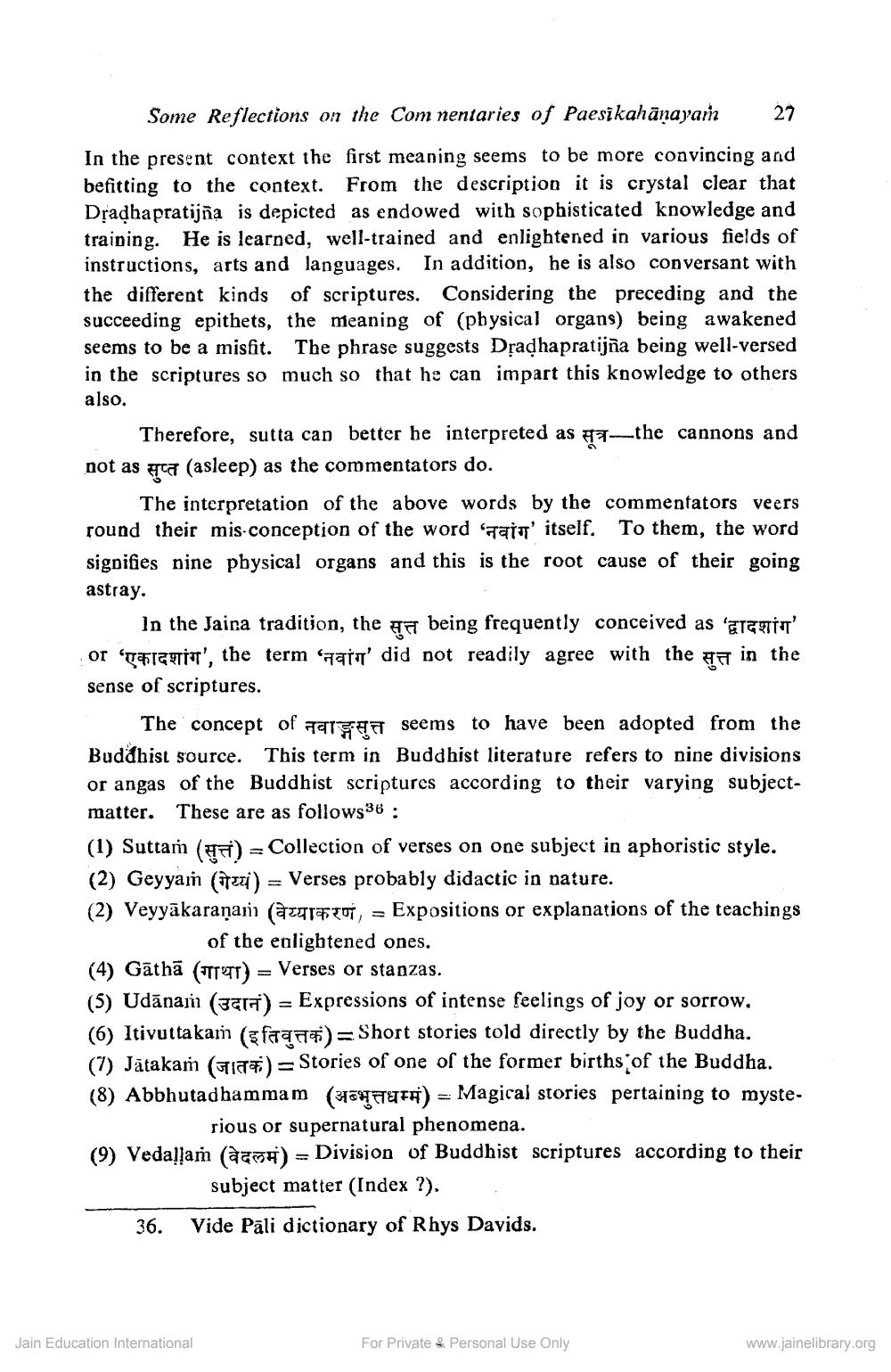________________
Some Reflections on the Com nentaries of Paesikahāṇayam
27
In the present context the first meaning seems to be more convincing and befitting to the context. From the description it is crystal clear that Dradhapratijña is depicted as endowed with sophisticated knowledge and training. He is learned, well-trained and enlightened in various fields of instructions, arts and languages. In addition, he is also conversant with the different kinds of scriptures. Considering the preceding and the succeeding epithets, the meaning of (physical organs) being awakened seems to be a misfit. The phrase suggests Dradhapratijña being well-versed in the scriptures so much so that he can impart this knowledge to others
also.
Therefore, sutta can better he interpreted as the cannons and not as a (asleep) as the commentators do.
The interpretation of the above words by the round their mis-conception of the word "ain' itself. signifies nine physical organs and this is the root astray.
In the Jaina tradition, the सुत्त being frequently conceived as 'द्वादशांग' or 'एकादशांग', the term 'नवरंग' did not readily agree with the सुत्त in the sense of scriptures.
The concept of a seems to have been adopted from the Buddhist source. This term in Buddhist literature refers to nine divisions or angas of the Buddhist scriptures according to their varying subjectmatter. These are as follows36:
commentators veers To them, the word cause of their going
(1) Suttaṁ () = Collection of verses on one subject in aphoristic style. (2) Geyyam (z) = Verses probably didactic in nature.
(2) Veyyakaraṇaṁ (
Expositions or explanations of the teachings of the enlightened ones.
=
Jain Education International
(4) Gāthā (T) = Verses or stanzas.
(5) Udānam (32) = Expressions of intense feelings of joy or sorrow. (6) Itivuttakam (faq)= Short stories told directly by the Buddha. (7) Jātakaṁ (1) Stories of one of the former births of the Buddha. (8) Abbhutadhammam () = Magical stories pertaining to mysterious or supernatural phenomena.
(9) Vedallaṁ (a) = Division of Buddhist scriptures according to their subject matter (Index ?).
36. Vide Pali dictionary of Rhys Davids.
For Private & Personal Use Only
www.jainelibrary.org




